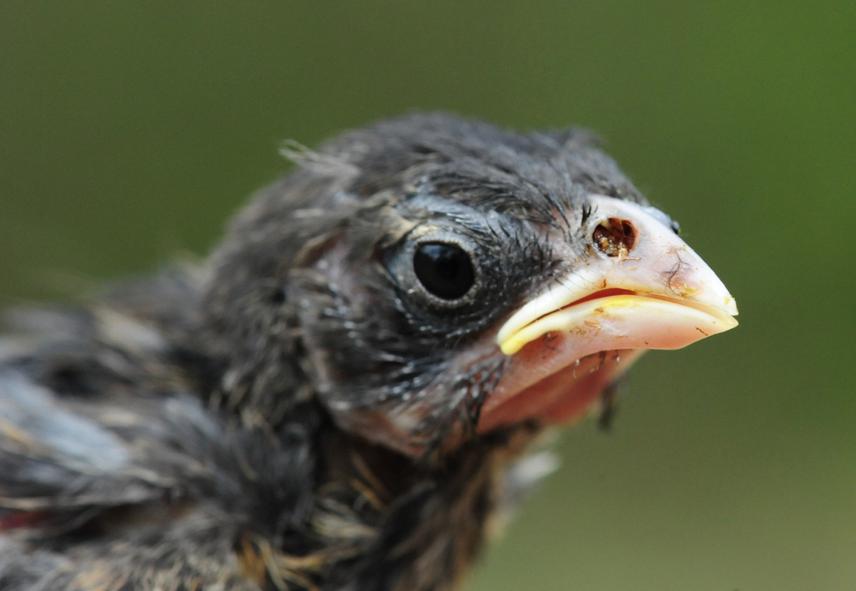Katharina Johanne Peters & Sonia Kleindorfer
Other projects
1 Feb 2013
Ensuring the Survival of Darwin’s Finches through the Control of an Introduced Parasitic Fly and by Galvanising Local Community Action
With this project we aim to access the efficiency of manual fly control in removing the introduced lethal parasitic fly Philornis downsi whose larvae pose the biggest threat to the survival of Galapagos land birds.

Fledgling with Philornis larvae in naris. ©K. Peters.
The iconic Darwin’s Finches have been pivotal in the development of evolutionary theory, ecology and conservation. Galápagos National Parks recently ranked the introduced parasitic fly Philornis downsi as the highest risk for all Galápagos land birds. The adult fly is a harmless vegetarian, but lays its eggs in bird nests and the hatched larvae feed on nestling blood and tissue. The fly was discovered in Darwin finch nests in 1997. Since then, annual nestling mortality of up to 98% due to the fly has been recorded across islands and bird species. In 2013 we monitored 25 nests of the critically endangered Medium Tree Finch (Camarhynchus pauper) of which none were successful and all were infested with Philornis larvae.
A pilot study on Santa Cruz Island in 2012 showed the efficacy of removing adult female flies; furthermore, dissection of the female flies showed that each female had ~80 eggs. The mean number of larvae per finch nest is about 30; thus, removing a single fly can potentially remove all larvae from 2.5 finch nests and thereby reduce suffering and mortality.
The most significant contribution of the proposed research is a reduction in the adult population of the introduced parasitic fly Philornis downsi on Floreana Island. This reduction in the adult fly population will be associated with fewer flies to lay eggs in the nests of Darwin’s finches, fewer larvae that feed on Darwin’s finches, and lower nestling mortality in Darwin’s finches.
Using an experimental approach combined with the continuing long-term nest-monitoring program, tis project will test if manual parasite control can reduce parasite intensity and increase nestling survival in the Medium Tree Finch.